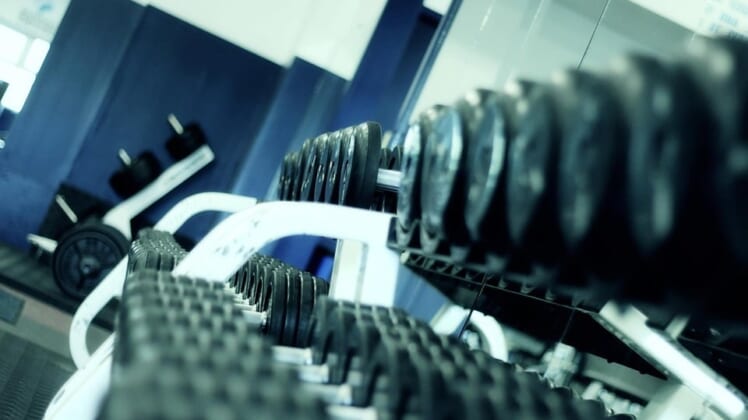
Why should I lift weights?
If you think that weights are only for body builders and biceps-flexing showoffs, you may be surprised to learn that a good lifting routine has many health benefits, especially for women. Most women start losing bone mass in their late 30s or early 40s. Weight training can restore bone strength and help prevent osteoporosis. As a bonus, weight training can help you trade fat for muscle and make it easier to reach your weight loss goals. You’ll also have more strength and balance for your daily tasks and activities.
What does a typical weight-training workout involve?
A good weight-lifting routine takes about 30 minutes, enough time to work all your muscle groups for a few minutes. Before you hit the weights, warm up your body with five to 10 minutes of light activity such as walking or jogging to get your blood flowing. A few light stretches can be helpful, too.
When it’s time to start lifting, you’ll want to choose a range of motions that work the 10 major muscle groups: abdominals, back, biceps, butt, calves, chest, hamstrings, quadriceps, shoulders, and triceps.
Should I use weight machines or free weights?
Either one will work, but machines are a good choice for beginners. If you’re at a gym with many different machines, you can find one for each major muscle group. Machines also encourage correct lifting form, which reduces the risk of injuries.
Free weights such as barbells and dumbbells can be a good choice for experienced lifters who want more variety and flexibility in their routine. When lifting free weights, it’s up to you to balance and control the weight, an extra challenge that makes the workout that much more complete and intense.
What’s the best weight-lifting technique?
Of course, the exact technique differs from one exercise to another. But no matter what type of lifting you’re doing, you’ll want go slow and steady — no bouncing or jerking — and stay within your limits. Too many beginners try to lift too much too soon, and they end up hurting themselves as a result.
Beginners should start by lifting relatively light weights for 10 to 15 repetitions. Generally, you’ll want to do three sets of repetitions for each muscle group. As that becomes easier, they can try eight to 12 reps with heavier weights. However you’re lifting, try holding the weight in position for two counts, then slowly lower it for three to four counts. Breathe in when you lift and breathe out when you lower the weight.
Your muscles should get tired during a workout, but they shouldn’t hurt. If you’re lifting to the point of pain, you’re doing too much. And while you might feel a little sore the next day, your muscles shouldn’t be inflamed or swollen.
It’s a good idea to start with larger muscle groups such as the back and chest before moving on to smaller groups such as the biceps. If you wear out your small muscles first, you won’t have the strength to give your large muscle groups the workout they need.
How often should I lift weights?
Muscles need a rest between weight-lifting sessions, so plan to lift two or three times a week. Of course, you can work out on consecutive days as long as you’re working different muscle groups. On days you aren’t lifting, try running, walking, or swimming for a more complete workout routine.
Do I need a trainer or should I lift on my own?
If you’re a beginner, one or two sessions with a personal trainer can be a great investment, especially if if you want to try free weights. A trainer may cost $25 to $100 an hour, but you’ll be getting more out of your workout with less risk of injury.
A good trainer is certified through an agency such as the American Council on Exercise or the American College of Sports Medicine. If you decide not to hire a trainer, look for a good instructional video. Once you know how to lift safely and effectively, you can walk into that weight room with confidence.
By Chris Woolston, M.S.
Exercise and Fitness Health Library Copyright ©2017 LimeHealth. All Rights Reserved.
